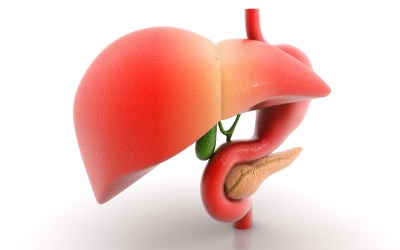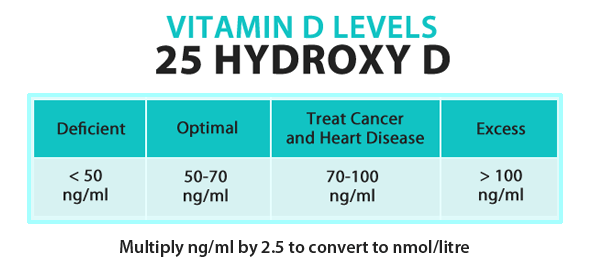P.J.
0
Discover the 5 Unconventional Signs of Breast Cancer
Discover the 5 Unconventional Signs of Breast Cancer
May 27, 2013
Breast cancer is one of the most common form of the disease in the world that affects both men and women. The chances of getting the disease increase as you age, but detecting it at an early age could be life saving. In this post I am going to discuss signs and symptoms of breast cancer that many people overlook.
The majority of breast cancer cases are diagnosed in people who are aged 40 and up, but in the instances where it affects younger people it tends to be more aggressive. This makes early detection an essential part of treating the disease within its onset stages.
It’s important to have a firm grasp of bodily knowledge, as the earliest stages of breast cancer usually come without pain. The most common indicator is the discovery of a lump, but cancer goes through multiple progressive stages before these lumps form. It sometimes takes years. People shouldn’t rely solely on lumps to indicate breast cancer, as they usually indicate an already thriving disease.
There are several signs that the American Cancer Society claim should be analyzed closely by a specialist. It is important to remember that these signs aren’t definitive proof of existing breast cancer. They can sometimes indicate smaller hormonal or health factors, so visiting an expert can clear any ambiguity. Some of the more obvious signs are:
Here are a few of the sneakier breast cancer indicators that many people overlook:
1. Itching, redness and pain
It’s common for breasts to be sore and sensitive during menstruation, but this symptom could mean something more serious if the sensitivity persists after the period. There may also be swelling involved with skin that is warm to the touch, indicating the less common (about 3% of cases) forms of inflammatory breast cancer.
Inflammatory cancer may also cause swelling, itching and pain in the chest. The skin may look scaly or have small blue marks similar to hemorrhages, somewhat like cellulite holes on the breast. Some women misunderstand the symptom for an allergic reaction on their breasts that refused to leave after several days. It’s important to know that this form of cancer is characterized by a rapid development, which blocks the blood vessels feeding the skin to cause redness, warmth and sensitivity.
2. Back pain
Patients typically feel back pain in the upper back between the shoulder blades before any other sign of breast cancer reveals itself. The discomfort is usually attributed with muscle pain, inflammation of the spine or stretching the tendon and ligaments in the back. It’s important to know that tumors will sometimes develop deep within the breast tissue of the chest and felt in the spine or ribcage. There is also the possibility of metasis, a malignant spreading of the disease to the ribs or spine.
3. Pain and tenderness in the armpit
According to studies, the first place breast cancer spreads to is the axillary lymph nodes. The axillary lymph nodes indicate breast cancer in the same way the lymph nodes in the neck and throat indicate a flu, making the axillaries an essential place for onset discovery. Swollen lymph nodes in the armpit or pain and tenderness could indicate the presence of a tumor before it becomes noticeable in the breast. Any pain or discomfort in the armpit is something that should definitely be tested.
First the person testing should compare it to their other armpit. If the difference is persistently evident, it’s worth consulting an expert. There is sometimes a hard lump that appears in the armpit and tissue surrounding it that won’t move when touched. There may also be tissue that is thicker and dense when compared with the other armpit. A sore spot could indicate many things that aren’t a tumor. It never hurts to be safe and get a medical evaluation, however, as the underarm tissue does have a close connection to breast tissue.
4. Nipple discharge or changes
One of the most common locations of breast cancer is beneath the nipple. The presence of a cancerous lesion may cause changes in appearance and sensitivity. Different texture, color and shape might occur. The nipple may also feel much more tender and have an unusual texture. Some women describe a lack of sensitivity within the nipple, especially during intimate relations.
A discharge of clear liquid, blood, or milk that doesn’t happen during breast feeding might also be a sign of breast cancer. This happens when a tumor forms in the milk duct on the nipple or behind it. When this happens the skin jostles to one side, allowing the tumor to cause irritation and inflammation that results in an unusual discharge from the nipple. Medical evaluation and followups are needed for early detection, but it is important to remember that many tumors are harmless.
5. Changing shape from a circle to oval
Many women around the world believe that an easily visible and touchable lump close to the surface of the skin is a sign of a breast tumor. Far less women, however, report the fact that one breast has taken on an elliptical shape while the other remains normal. Other women have reported the progression of breast tissue on one side of the breast, looking uneven. Some women notice a change in appearance and feel when they put a bra on. Many times it’s the spouse that notices these physical indicators instead of the patient.
The best way to detect the changes that aren’t associated with pain or strange sensations is by learning about the appearance and size of your breasts. Breast cancer organizations recommend that you sit in front of a mirror and examine the structure of the breast. Use your hands to lift the breast and check the variability of skin stretching on both sides.
Don’t forget to do this often to make sure you don’t miss any sudden changes in appearance. Any of these symptoms should be analyzed by a medical professional for a conclusive verdict. If not professionally examined you’ll be left in a worrying state of uncertainty. Hopefully everything is fine, but even if it isn’t, detecting breast cancer in the earlier stages could very well make your chances for survival exponentially better.
5 Unconventional Signs of Breast Cancer
Discover the 5 Unconventional Signs of Breast Cancer
May 27, 2013
Breast cancer is one of the most common form of the disease in the world that affects both men and women. The chances of getting the disease increase as you age, but detecting it at an early age could be life saving. In this post I am going to discuss signs and symptoms of breast cancer that many people overlook.
The majority of breast cancer cases are diagnosed in people who are aged 40 and up, but in the instances where it affects younger people it tends to be more aggressive. This makes early detection an essential part of treating the disease within its onset stages.
It’s important to have a firm grasp of bodily knowledge, as the earliest stages of breast cancer usually come without pain. The most common indicator is the discovery of a lump, but cancer goes through multiple progressive stages before these lumps form. It sometimes takes years. People shouldn’t rely solely on lumps to indicate breast cancer, as they usually indicate an already thriving disease.
There are several signs that the American Cancer Society claim should be analyzed closely by a specialist. It is important to remember that these signs aren’t definitive proof of existing breast cancer. They can sometimes indicate smaller hormonal or health factors, so visiting an expert can clear any ambiguity. Some of the more obvious signs are:
- Change in breast structure
- Appearance of lumps
- Changes in the skin or nipple
Here are a few of the sneakier breast cancer indicators that many people overlook:
1. Itching, redness and pain
It’s common for breasts to be sore and sensitive during menstruation, but this symptom could mean something more serious if the sensitivity persists after the period. There may also be swelling involved with skin that is warm to the touch, indicating the less common (about 3% of cases) forms of inflammatory breast cancer.
Inflammatory cancer may also cause swelling, itching and pain in the chest. The skin may look scaly or have small blue marks similar to hemorrhages, somewhat like cellulite holes on the breast. Some women misunderstand the symptom for an allergic reaction on their breasts that refused to leave after several days. It’s important to know that this form of cancer is characterized by a rapid development, which blocks the blood vessels feeding the skin to cause redness, warmth and sensitivity.
2. Back pain
Patients typically feel back pain in the upper back between the shoulder blades before any other sign of breast cancer reveals itself. The discomfort is usually attributed with muscle pain, inflammation of the spine or stretching the tendon and ligaments in the back. It’s important to know that tumors will sometimes develop deep within the breast tissue of the chest and felt in the spine or ribcage. There is also the possibility of metasis, a malignant spreading of the disease to the ribs or spine.
3. Pain and tenderness in the armpit
According to studies, the first place breast cancer spreads to is the axillary lymph nodes. The axillary lymph nodes indicate breast cancer in the same way the lymph nodes in the neck and throat indicate a flu, making the axillaries an essential place for onset discovery. Swollen lymph nodes in the armpit or pain and tenderness could indicate the presence of a tumor before it becomes noticeable in the breast. Any pain or discomfort in the armpit is something that should definitely be tested.
First the person testing should compare it to their other armpit. If the difference is persistently evident, it’s worth consulting an expert. There is sometimes a hard lump that appears in the armpit and tissue surrounding it that won’t move when touched. There may also be tissue that is thicker and dense when compared with the other armpit. A sore spot could indicate many things that aren’t a tumor. It never hurts to be safe and get a medical evaluation, however, as the underarm tissue does have a close connection to breast tissue.
4. Nipple discharge or changes
One of the most common locations of breast cancer is beneath the nipple. The presence of a cancerous lesion may cause changes in appearance and sensitivity. Different texture, color and shape might occur. The nipple may also feel much more tender and have an unusual texture. Some women describe a lack of sensitivity within the nipple, especially during intimate relations.
A discharge of clear liquid, blood, or milk that doesn’t happen during breast feeding might also be a sign of breast cancer. This happens when a tumor forms in the milk duct on the nipple or behind it. When this happens the skin jostles to one side, allowing the tumor to cause irritation and inflammation that results in an unusual discharge from the nipple. Medical evaluation and followups are needed for early detection, but it is important to remember that many tumors are harmless.
5. Changing shape from a circle to oval
Many women around the world believe that an easily visible and touchable lump close to the surface of the skin is a sign of a breast tumor. Far less women, however, report the fact that one breast has taken on an elliptical shape while the other remains normal. Other women have reported the progression of breast tissue on one side of the breast, looking uneven. Some women notice a change in appearance and feel when they put a bra on. Many times it’s the spouse that notices these physical indicators instead of the patient.
The best way to detect the changes that aren’t associated with pain or strange sensations is by learning about the appearance and size of your breasts. Breast cancer organizations recommend that you sit in front of a mirror and examine the structure of the breast. Use your hands to lift the breast and check the variability of skin stretching on both sides.
Don’t forget to do this often to make sure you don’t miss any sudden changes in appearance. Any of these symptoms should be analyzed by a medical professional for a conclusive verdict. If not professionally examined you’ll be left in a worrying state of uncertainty. Hopefully everything is fine, but even if it isn’t, detecting breast cancer in the earlier stages could very well make your chances for survival exponentially better.
5 Unconventional Signs of Breast Cancer








































